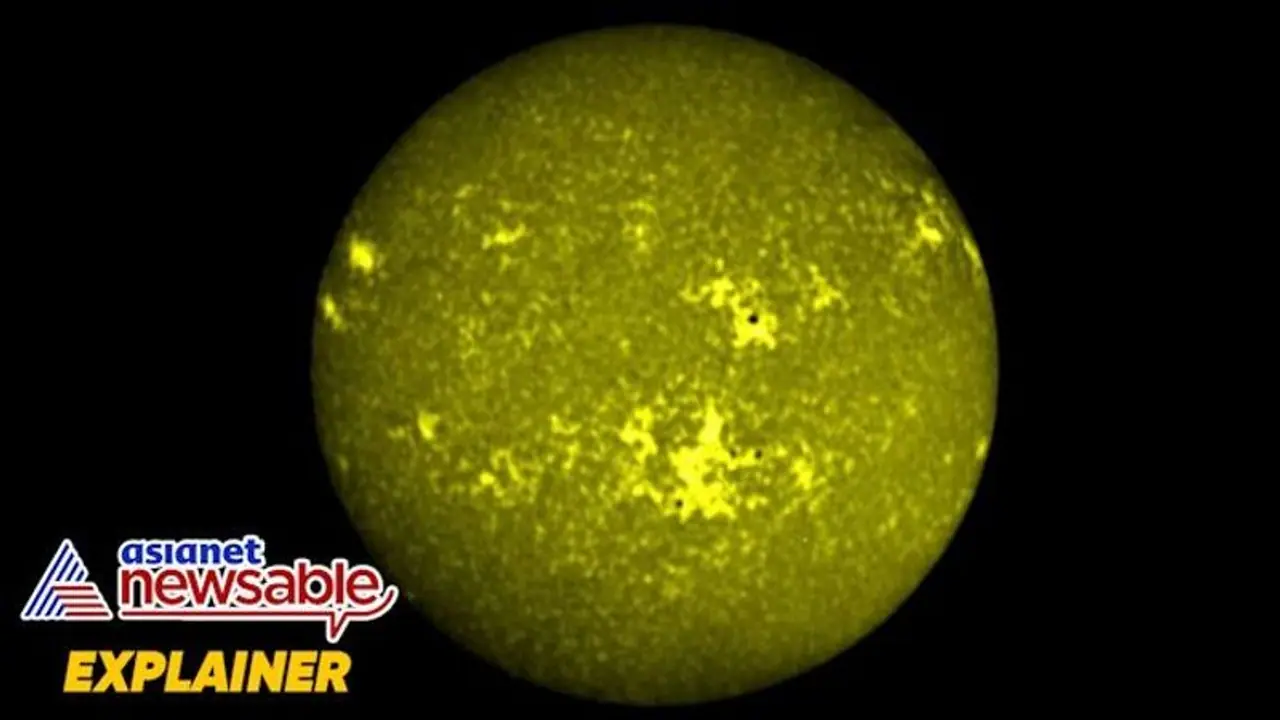Girish Linganna explains the significance of the successful capture of initial complete images of the Sun's disk by the Solar Ultraviolet Imaging Telescope (SUIT) on the Aditya L-1 spacecraft. SUIT, activated on November 20, 2023. The images reveal sunspots, plage, and quiet Sun regions, offering insights into solar dynamics.
On December 8, 2023, the Indian Space Research Organisation (ISRO) revealed that the Solar Ultraviolet Imaging Telescope (SUIT) on the Aditya L-1 spacecraft has achieved the commendable feat of capturing initial complete images of the Sun’s disk. The SUIT payload -- a significant tool designed to observe the Sun within the ultraviolet spectrum -- was activated on November 20, 2023. It will assist in the examination of the chromosphere and transition region of the Sun.

According to an update on X (formerly Twitter), where ISRO released the photos taken by SUIT, the pictures show successfully recorded full-disk representations of the Sun within the wavelength range of 200-400 nm. The SUIT instrument captures high-resolution, detailed images of the Sun’s atmosphere -- its photosphere and chromosphere -- within the mentioned wavelength range by employing different scientific filters.
These images will provide ISRO’s scientists -- and the global space research fraternity, at large -- pioneering insights into the intricate details of the solar photosphere and chromospheres in near-ultraviolet and also measure the solar irradiance variations in near-UV. The ultraviolet spectrum refers to the range of electromagnetic waves with shorter wavelengths than visible light beyond what the human eye can perceive.
Photosphere & Chromosphere
The solar photosphere is the outermost layer of the Sun’s surface, emitting visible light and forming the solar ‘disk’. It has a temperature of around 5,500 degrees Celsius and contains sunspots. Above the photosphere lies the chromospheres -- a transitional layer where temperatures rise, reaching around 20,000 degrees Celsius. The chromosphere is visible during solar eclipses as a reddish rim and is characterized by spicules, in solar physics implying jet-like eruptions of solar material from the Sun.
Both the layers -- the photosphere and the chromospheres -- play crucial roles in understanding the Sun’s dynamics, with the photosphere being the source of sunlight, while the chromosphere contributes to solar wind formation and influences space weather phenomena. The images captured by Aditya L-1’s SUIT instrument show some interesting features -- such as sun spots, plage and quiet Sun regions.
What Are Sunspots?
Sunspots, located on the Sun’s surface known as the photosphere, are shadowed areas with temperatures of around 3,500 degrees Celsius, a consequence of intense magnetic activity. The magnetic fields hinder heat flow, causing a temperature decrease. Sunspots often accompany solar flares, influencing space weather.
After a fruitful pre-commissioning phase, the telescope recorded its initial scientific images on December 6, 2023. These remarkable images, captured through eleven distinct filters, feature the first-ever complete views of the Sun in wavelengths spanning from 200 to 400 nm, except for Ca II h. Observations of the full solar disk in the Ca II h wavelength have been conducted by different observatories, according to the space agency.
Ca II h refers to a specific spectral line in the calcium-ionized state, which is observed at a wavelength of approximately 396.8 nm. Observing the solar disk in the Ca II h wavelength allows scientists to study the activity and features of the Sun’s chromosphere, the layer above the visible surface.
SUIT One of Seven Payloads
Significantly, SUIT stands out as one of the seven payloads integrated into Aditya-L1. Developed collaboratively by a team of 50 scientists, researchers and students from the Inter-University Centre for Astronomy and Astrophysics (IUCAA) in Pune, this joint effort involved ISRO, Manipal Academy of Higher Education (MAHE), Centre for Excellence in Space Science Indian (CESSI) at IISER-Kolkata, Indian Institute of Astrophysics in Bengaluru, Udaipur Solar Observatory (USO-PRL) and Tezpur University in Assam.
The arrival of Aditya-L1 at the L-1 Point -- or, Lagrange Point, in the Sun-Earth system where the spacecraft will be positioned within a halo orbit -- is scheduled for January 2024. Aditya L-1 will orbit around L-1, which is located approximately 1.5 million kilometres away from Earth in an orbit that is not perfectly circular. Mathematician Joseph Louis Lagrange is credited with the discovery of the L-1 Point.
Aditya L-1, India’s inaugural mission to study the Sun’s secrets, was launched by the Indian Space Research Organisation (ISRO) on September 2, 2023. The mission’s name, 'Aditya', has been derived from Sanskrit, meaning the Sun. Aditya L-1’s placement at the L-1 Point will enable uninterrupted monitoring of the Sun and its behaviour, unaffected by Earth’s atmosphere. The mission has been planned for a period of 5.2 years.
